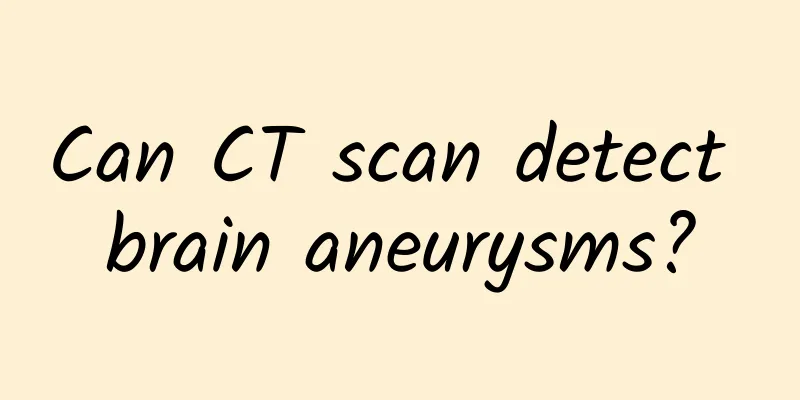Can CT scan detect brain aneurysms?

|
Brain aneurysms can be detected through CT examination, especially CT angiography (CTA), which can clearly show the location, size and shape of the aneurysm. CT examination is a non-invasive and rapid imaging method suitable for preliminary screening and diagnosis of brain aneurysms. If a brain aneurysm is suspected, CT examination is one of the preferred imaging methods. 1. Principles and advantages of CT examination CT uses X-rays and computer technology to generate cross-sectional images that can clearly show the anatomical structure of brain blood vessels. CT angiography can enhance the visualization of blood vessels by injecting contrast agents, helping doctors find aneurysms. CT examinations are fast and have high resolution, making them particularly suitable for emergency situations and for rapid assessment of the condition. 2. Other auxiliary examination methods In addition to CT, magnetic resonance angiography (MRA) and digital subtraction angiography (DSA) are also commonly used examination methods. MRA does not require injection of contrast agents and is suitable for patients who are allergic to iodine; DSA is the gold standard for diagnosing cerebral aneurysms and can provide more detailed vascular information, but it is an invasive examination and is usually used for diagnosis and preoperative evaluation. 3. Treatment of cerebral aneurysm The treatment of cerebral aneurysms mainly includes surgical clipping and endovascular interventional therapy. Surgical clipping directly clips the neck of the aneurysm through craniotomy to prevent rupture; endovascular interventional therapy uses a catheter to place a coil or stent into the aneurysm to promote thrombosis and achieve the purpose of sealing the aneurysm. For unruptured aneurysms, doctors will decide whether treatment is needed based on the size and location of the aneurysm and the patient's health status. 4. Prevention and daily management The key to preventing cerebral aneurysms is to control high blood pressure, quit smoking, and limit alcohol consumption. Regular physical examinations and imaging examinations can help detect aneurysms early. If a cerebral aneurysm is diagnosed, the patient should avoid factors that may induce aneurysm rupture, such as strenuous exercise and emotional fluctuations, and follow the doctor's advice for follow-up and treatment. Brain aneurysm is a potentially serious disease, and early detection and timely treatment are crucial. CT scans, as a preliminary screening method, can effectively help doctors diagnose brain aneurysms. If a brain aneurysm is suspected, it is recommended to seek medical attention as soon as possible, and determine the treatment plan through imaging examinations and professional evaluations to reduce the risk of rupture and ensure life safety. |
<<: What are the symptoms of intestinal obstruction in newborns?
>>: What to do if you have gallstones after eating greasy food
Recommend
What are the symptoms of gallstones?
Gallstones are a common digestive system disease....
Does a 2 cm perianal abscess require surgery?
Perianal abscesses 2 cm usually require surgical ...
Can I breastfeed if I have a breast cyst?
It is usually possible to continue breastfeeding ...
Can I eat fish maw if I have breast cyst?
Patients with breast cysts can eat fish maw in mo...
What medicine should I take for capillaritis
If the patient's condition is mild, with only...
Diagnosis and treatment of cervical spondylosis
Tell the patient to rest in bed and fix the cervi...
What can women eat to get better quickly from osteoporosis?
Osteoporosis in women can be accelerated through ...
Causes of Breast Cysts
The occurrence of breast cysts is usually related...
What does breast hyperplasia grade II mean?
Breast examination includes many items, such as B...
What causes breast cysts?
Breast cysts are usually benign lesions, which ar...
Does swimming help with lumbar disc herniation?
Does swimming help with lumbar disc herniation? 1...
What causes rheumatoid arthritis?
The causes of rheumatoid arthritis may include ge...
Can I eat shrimp if I have breast cyst?
Patients with breast cysts can usually eat shrimp...
Will multiple breast cysts heal on their own?
It is usually difficult for multiple breast cysts...
What to eat after gallstone surgery to help wound healing
Diet during the recovery period after gallstone s...









